| Umělec magazine 2001/1 >> DIY on the Rise | List of all editions. | ||||||||||||
|
|||||||||||||
DIY on the RiseUmělec magazine 2001/101.01.2001 Vít Havránek | review | en cs |
|||||||||||||
|
"Ján Mančuška, I Don’t Like Going to the Bathroom Anywhere Else But Here, Dům Umění–České Budějovice, 18 January – 18 February 2001
Dům Umění in České Budějovice this year put together Ján Mančuška’s biggest solo show to date, entitled I Don’t Like Going to the Bathroom Anywhere Else But Here. The gallery has over time developed an excellent exhibition program alternating international and Czech artists both established and representing the middle and youngest generations. The exhibition consisted of several parts. One item on show was an already familiar installation of a bathroom with a toilet, which had previously been presented in Prague and Berlin but here appeared in a new arrangement.1 The remaining parts included assemblage reliefs and drawings (exhibited at the Divadlo Hudby in Olomouc), a cut-out box simulating a shadow vacuum cleaner (exhibited at the Na Bidýlku Gallery, Brno), plus a few new works: a fragile “sculpture” of a wooden wheel made of a stack of lightly connected cheap domestic materials, a pile of boxes with a drawing of a step ladder, two videos showing the insides of kitchen cabinets in various households and two new solitary chairs. Both of the chairs were remarkable. One of them looked like a super-appealing Brussels design, but was rather repulsively made of colorful Q-tips. The second chair, a little unstable like its Brussels sister, was skillfully crafted from a number of wires whose ends were surprisingly twisted into numbers from one to five. The effect transposed the chair installation into a mysterious, pseudo-scientific underground, a place Mančuška has never visited before. Mančuška makes his works individually, “piece by piece,” and subsequently composes them into variable installations. Thanks to the universality of the objects produced, he is able to put together room sets that vary according to the mood created by the real character of the exhibition space. The movables are a given; it is the subsequent intuitive and constructive organization of the interior elements into individual formations that makes up the decisive part of Mančuška’s creative work. It is a hybrid solution we all know well from our daily lives: Who doesn’t have an easily recognizable piece of IKEA furniture at home? But there are cases when the uniforming spirit of IKEA disappears thanks to a stronger “spirit”: It is transformed, and the goods become personalized parts of a unique apartment (making the IKEA dream of “furniture for everybody” come true). Some fashion brands evoke the same feelings, of course: be free, be yourself, be unique. But what is it worth when half of the people from Prague, London, Italy, and Germany are uniquely the same? Mančuška’s paraphrase of the basic elements of furniture represents an antithesis to some of the most important functions of contemporary design: They are not functional, they cannot be mass produced, they are made from completely second-rate materials, they collapse, parts of them fall off and they don’t last. But they are made of contemporary living tissue, they breathe uniqueness and uselessness in a country of low cost, wearisome functionality, rationalized logistics and marketing strategy. They would make ideal illustrations for the advertising slogans used by mass producers of uniqueness. Aside from this general marketing dimension, Mančuška’s burdensome manual work clearly comes from the DIY tradition. At first I thought Přemek Podlaha and all his TV DIY shows were ironically ridiculous, a grotesque problem local to the Czech environment, intellectually conceived according to Havel’s thesis as the escape of a Socialist petty-bourgeois to a countryside oasis, an apolitical escape to cottage repairs, beer, rockery gardens, and Sunday socials round the radio. But it seems that this explanation underestimated the reality, which was something broader. If we were to look for previous phases of furniture art, we would end up with a pretty strange opposition of artists: Artschwager on the one side and Kabakov on the other. But furniture art really comes into its own in connection with film and photography, where its sign system often plays the role of a backdrop, in essence more expressive than the narrative and action in the foreground. This style is also a polemic response to Mike Kelley’s easy-going rock style, which has exhausted itself in its alternativeness, just as guitar bands look aged and worn-out today. DIY as an attitude demonstrates a return to the need to ventilate galleries with something living and authentic, which is by nature related to the seemingly nomadic function of art in today’s value system. In the social dimension, a handyman bears the seal of mediocrity, an unpretentious civilian species standing slightly outside the new mainstream in fashion, technologies and lifestyle. His program involves a slightly romantic return to self-sufficiency and primary production, an idealized return to nature. The eternal essence is represented by a return to the production of objects in its bare proto-phase when the gigantic post-industrial system of signifying and functions had not yet infiltrated the formation of objects. In the film Matrix (1999), the rebels epitomizing an alternative are characterized by DIY anti-design, demonstrating a return to real individuality, even in this case with their highly intelligent machines. The new forms of superficial variety, created using pre-industrial processes of production, give each object a non-reducible, unique value just like a human being. Let’s get back to one element in Mančuška’s installations: his concentration on the operational parts of interiors, especially kitchens, bathrooms and toilets. One might say that he is interested in two essential functions of the human body — filling and emptying — as they relate to relatively advanced hygienic functions. He is interested in these domestic spaces as intersections of intimacy with the functionally mechanical aspect of a household but also from a formal perspective — the video showing the insides of twenty kitchen cabinets takes us to an inhabited labyrinth of cups, boxes, jars and bottles, a predominantly female world that Mančuška sincerely admires, as is reflected in the female gender used in the exhibition’s title. Mančuška’s kitchen symphonies represent an inverted image of the virile world of workshop shelves, where boxes of screws and nails, hammers, chisels and drills are replaced by packets of tea. Translated by Vladan Šír Notes 1.Remote Similarities, Something More Than Cosmetics, 1999, Modern and Contemporary Art Collection of the National Gallery in Prague, curated by Jana and Jiří Ševčík Überlebens Kunst, 2000, Neuer Berliner Kunstverein, 2000, curated by Alexander Tolnay and Jána and Jiří Ševčík "
01.01.2001
Recommended articles
|
|||||||||||||
|
04.02.2020 10:17
Letošní 50. ročník Art Basel přilákal celkem 93 000 návštěvníků a sběratelů z 80 zemí světa. 290 prémiových galerií představilo umělecká díla od počátku 20. století až po současnost. Hlavní sektor přehlídky, tradičně v prvním patře výstavního prostoru, představil 232 předních galerií z celého světa nabízející umění nejvyšší kvality. Veletrh ukázal vzestupný trend prodeje prostřednictvím galerií jak soukromým sbírkám, tak i institucím. Kromě hlavního veletrhu stály za návštěvu i ty přidružené: Volta, Liste a Photo Basel, k tomu doprovodné programy a výstavy v místních institucích, které kvalitou daleko přesahují hranice města tj. Kunsthalle Basel, Kunstmuseum, Tinguely muzeum nebo Fondation Beyeler.
|












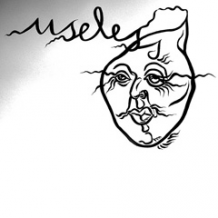






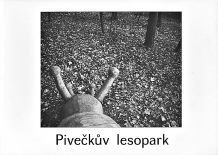




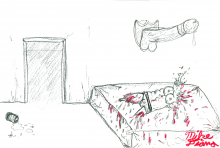
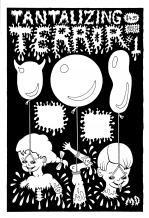
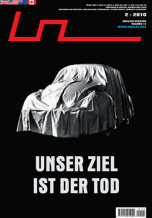



 New book by I.M.Jirous in English at our online bookshop.
New book by I.M.Jirous in English at our online bookshop.
Comments
There are currently no comments.Add new comment